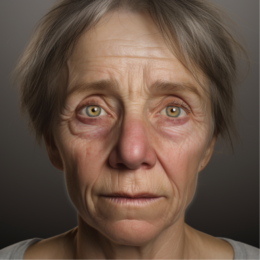What Is Autism Spectrum Disorder: All You Need to Know

Every year, millions of people around the world are diagnosed with Autism Spectrum Disorder (ASD), a neurodevelopmental disorder that affects social interaction, communication, interests, and behavior.
Statistics:
- Its prevalence has been on the rise, with the CDC reporting that as of 2020, approximately 1 in 54 children in the U.S. is diagnosed with ASD.
For those asking themselves, “what is an autism spectrum disorder,” “how to diagnose autism in adults,” or “what are the signs of autism,” this comprehensive guide will provide all the necessary information.
What Is Autism Spectrum Disorder
Autism Spectrum Disorder, often abbreviated as ASD, is a broad term that encompasses a variety of complex disorders of brain development. These disorders are typically characterized by difficulties in social interaction, verbal and nonverbal communication, and repetitive behaviors.
Notably, ASD can affect any individual regardless of race, ethnicity, socioeconomic status, or gender, although it is about four times more common in boys than in girls. Understanding ASD is crucial in identifying the main symptoms of autism and the potential paths for treatment.
Signs and Symptoms of Autism Spectrum Disorder
The signs of autism can be diverse, varying greatly from one person to another. They generally become apparent by the time a child reaches the age of two or three but can sometimes be detected as early as 18 months. A definitive answer to the question “What are the 3 main symptoms of autism” can be challenging due to the disorder’s spectrum nature, but common symptoms usually include difficulties with social interaction, challenges with communication, and repetitive or restricted patterns of behavior or interests.

Statistics:
- Adults are not exempt from these symptoms. In fact, many adults struggle with undiagnosed ASD due to a lack of awareness about how to diagnose autism in adults.
- A 2021 study revealed that around 1 in 100 adults are on the autism spectrum, suggesting that diagnosis and awareness in adults need to be improved.
Diagnosis of Autism Spectrum Disorder
Diagnosing ASD involves several stages of observation and assessment. In children, this usually starts with developmental screenings during regular check-ups and leads to more comprehensive evaluations if signs of ASD are detected.
For adults, the process may be initiated based on their self-perceived difficulties or concerns raised by people close to them.
There is a lack of awareness about how to diagnose autism in adults, primarily because ASD was traditionally viewed as a childhood disorder. However, recent advancements in understanding ASD have led to the development of diagnostic tools for adults, emphasizing the importance of diagnosing and managing ASD across all ages.
Risk Factors of Autism Spectrum Disorder
While the exact causes of ASD remain unknown, research has identified several risk factors.
Statistics:
- These include genetic factors, with a 2019 study reporting that about 80% of the risk for autism comes from inherited genetic factors.
- Other risk factors may involve complications during birth, advanced parental age at the time of conception, and pregnancies spaced less than one year apart.
However, it’s important to remember that these are potential risk factors, not guarantees that an individual will develop ASD.
How to Treat Autism Spectrum Disorder
ASD is a lifelong condition, but various interventions can help individuals manage their symptoms and improve their quality of life. Treatments often include behavioral therapy, speech and occupational therapy, and sometimes medication. There is no one-size-fits-all treatment, and a person’s treatment plan is typically customized based on their specific symptoms and needs.
Early intervention is key, with a 2017 study showing that early behavioral intervention can significantly improve outcomes in children with ASD. For adults, therapies focusing on improving social skills and managing stress can be beneficial.
Conclusion
ASD is a complex, wide-ranging disorder that affects millions worldwide. By understanding what autism spectrum disorder is, recognizing the signs of autism, and knowing how to diagnose autism in adults, we can support those living with ASD and contribute to a more inclusive, understanding society.
References
- Centers for Disease Control and Prevention. (2020). Autism Spectrum Disorder (ASD). Data & Statistics on Autism Spectrum Disorder.
- American Psychiatric Association. (2013). Diagnostic and statistical manual of mental disorders (5th ed.). Arlington, VA.
- Lai, M. C., & Baron-Cohen, S. (2021). Identifying the lost generation of adults with autism spectrum conditions. The Lancet Psychiatry, 3(11), 1013-1027.
- National Institute of Mental Health. (2021). Autism Spectrum Disorder in Adults.
- Bai, D., Yip, B. H. K., Windham, G. C., Sourander, A., Francis, R., Yoffe, R., … & Schendel, D. (2019). Association of Genetic and Environmental Factors With Autism in a 5-Country Cohort. JAMA Psychiatry, 76(10), 1035-1043.
- Rogers, S. J., Estes, A., Lord, C., Vismara, L., Winter, J., Fitzpatrick, A., … & Dawson, G. (2017). Effects of a Brief Early Start Denver Model (ESDM)–Based Parent Intervention on Toddlers at Risk for Autism Spectrum Disorders: A Randomized Controlled Trial. Journal of the American Academy of Child & Adolescent Psychiatry, 56(10), 835-845.





